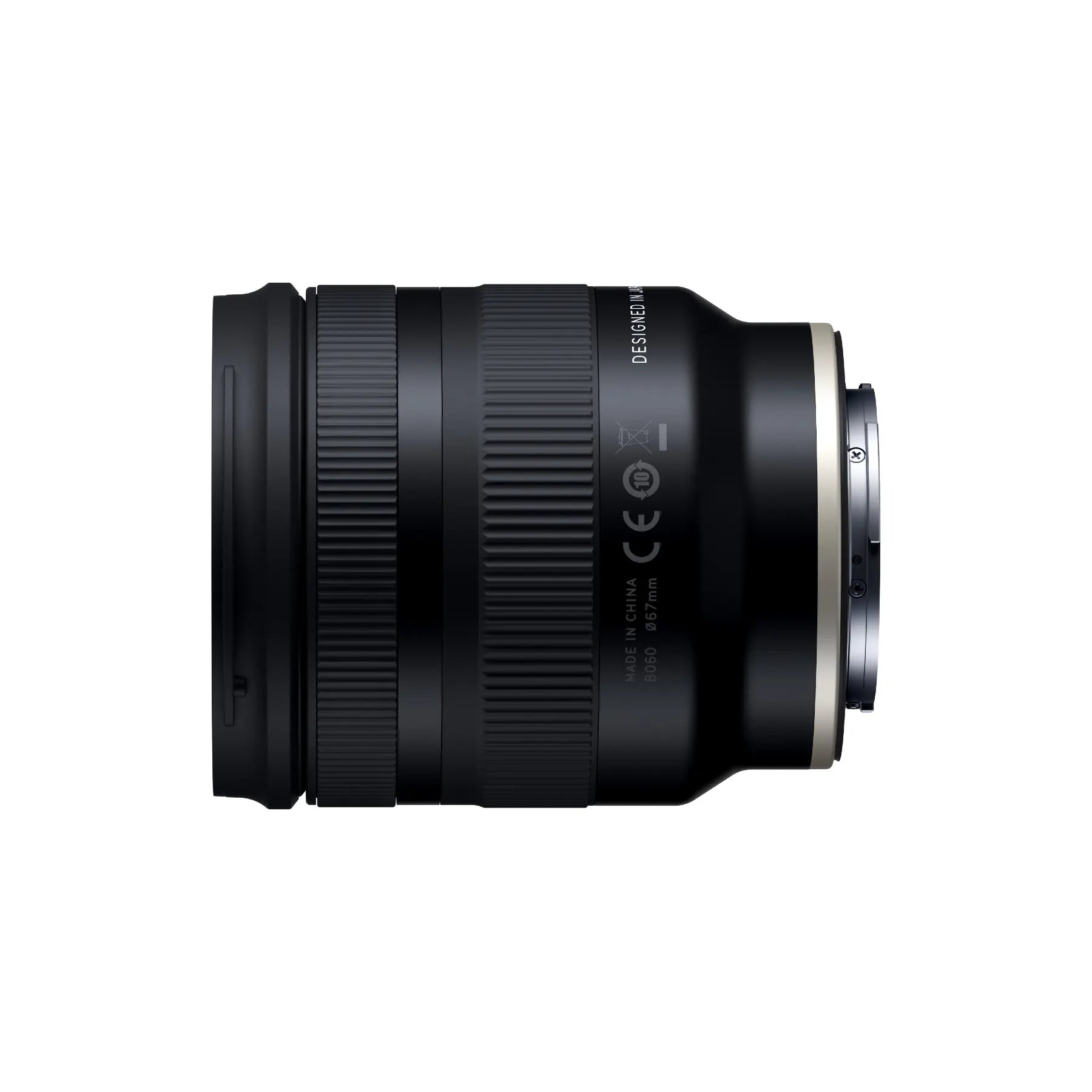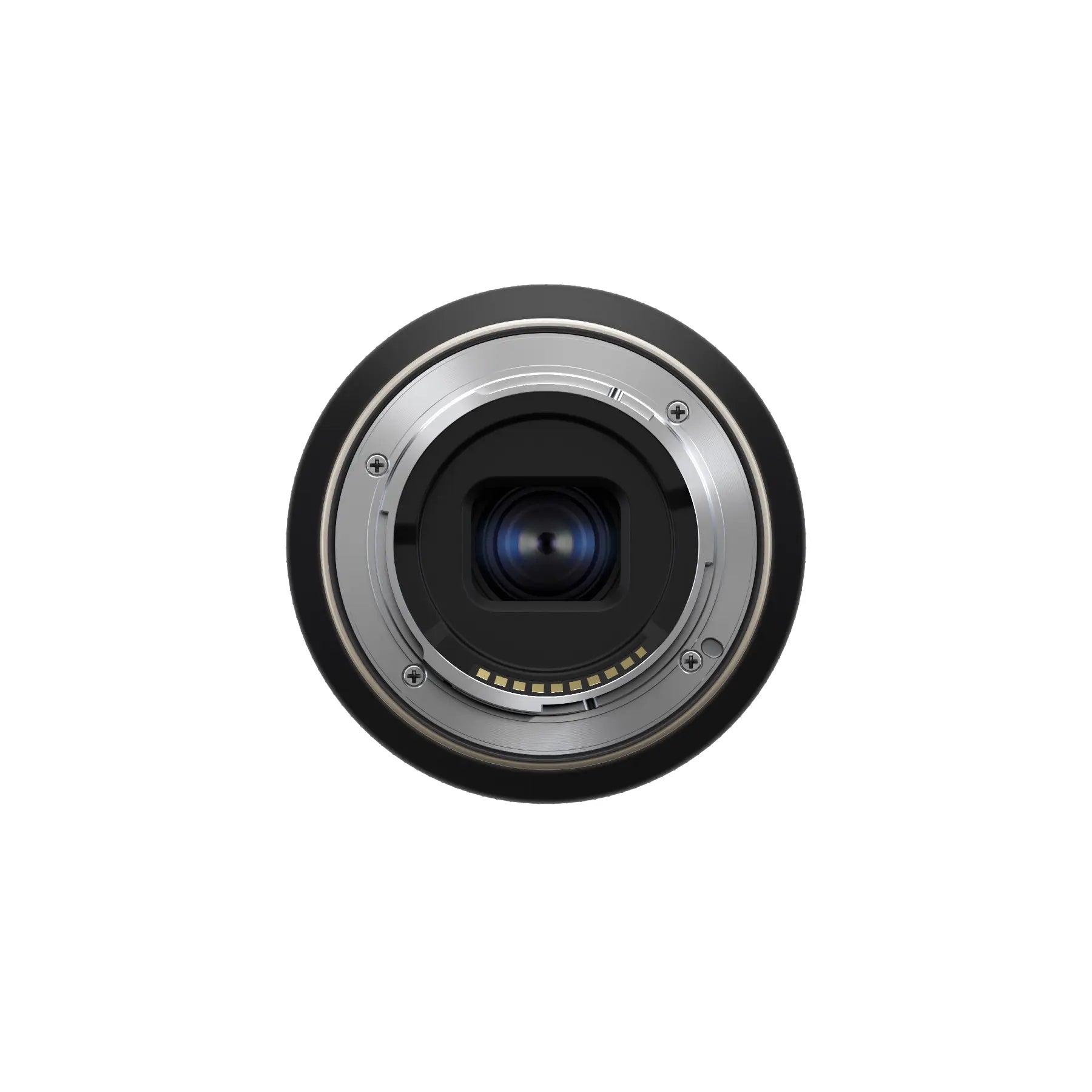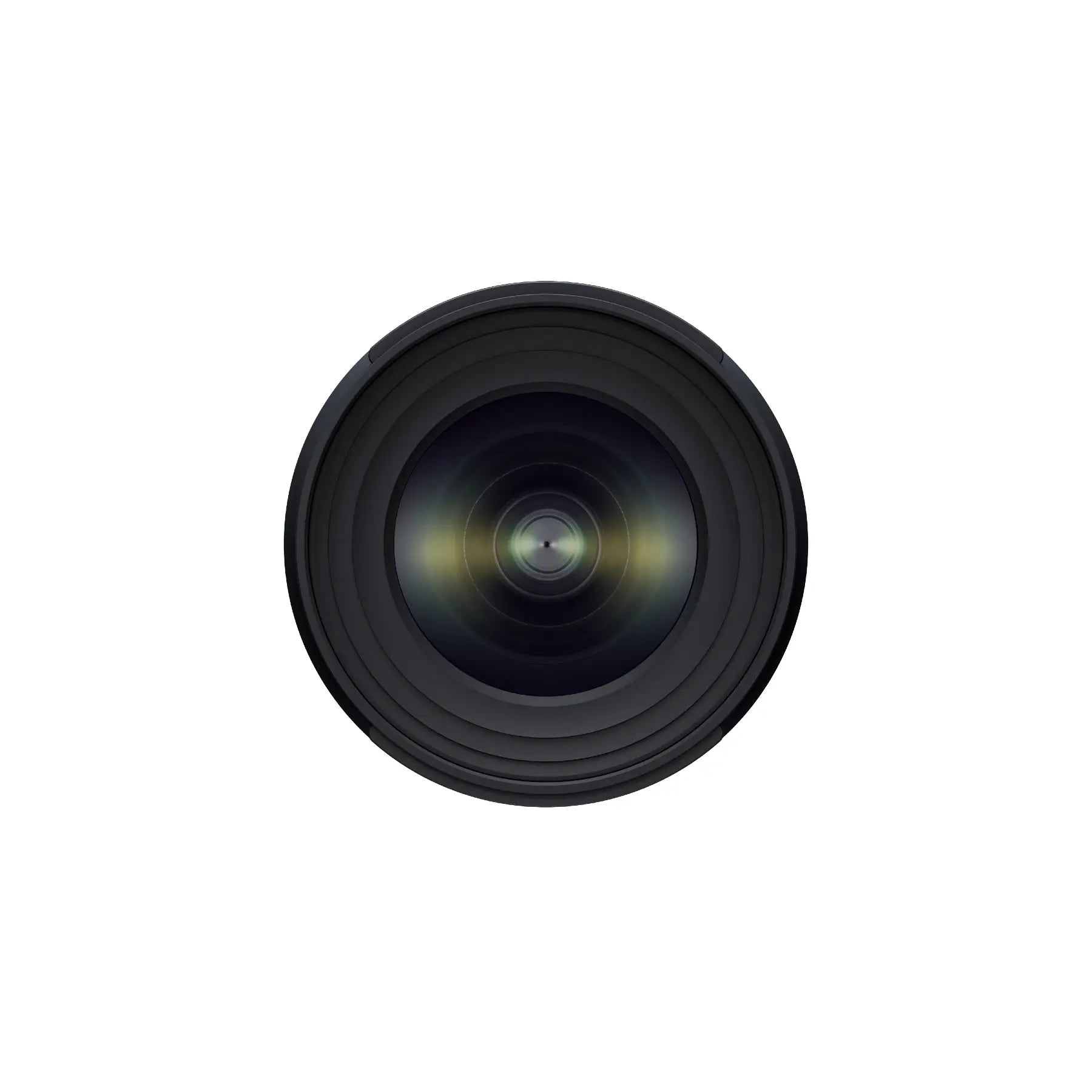Product Description
Tamron 11-20mm F2.8 Di III-A VC RXD Lens for Sony E-Mount
World’s First F2.8 Ultra-Wide-Angle Zoom for APS-C Mirrorless Cameras
The Tamron 11-20mm F2.8 Di III-A VC RXD lens breaks new ground as the first ultra-wide-angle zoom lens with a fast, constant F2.8 aperture designed for Sony E-mount APS-C mirrorless cameras. Combining superior optics, lightweight construction, and versatile features, this lens is a must-have for photographers and videographers who want professional-quality results in a compact, travel-friendly package.

Key Features at a Glance
- Ultra-Wide-Angle Zoom: 11-20mm focal length (16.5-30mm full-frame equivalent).
- Bright Constant Aperture: F2.8 maximum aperture across the entire zoom range for low-light performance and creative depth-of-field control.
- Compact & Lightweight: Measures just 86.2mm and weighs only 335g, making it highly portable.
- Outstanding Optics: Features two GM (Glass Moulded Aspherical) elements for edge-to-edge sharpness and exceptional resolution.
- RXD Stepping Motor: Provides fast, accurate, and silent autofocus for stills and video.
- Close-Focus Capability: Minimum object distance (MOD) of 15cm at 11mm for stunning wide-angle macro shots.
- Built-In VC (Vibration Compensation): Reduces camera shake for sharp handheld images, especially in low light.
- Weather-Sealed Construction: Durable build with moisture resistance and a fluorine coating on the front element.

Compact and Lightweight for Everyday Use
The Tamron 11-20mm F2.8 is remarkably portable at only 86.2mm in length and 335g in weight, making it an ideal choice for photographers on the move. Despite its fast F2.8 aperture, this lens is designed for maximum usability, ensuring you can carry it comfortably all day or easily fit it into a small camera bag.

Incredible Optical Performance
Tamron has equipped this lens with a sophisticated optical design that includes 12 elements in 10 groups, featuring:
- Two GM (Glass Moulded Aspherical) Elements: Ensure outstanding sharpness and resolution across the frame.
- LD (Low Dispersion) Elements: Minimise chromatic aberrations and colour fringing for superior clarity and colour accuracy.
This advanced construction delivers sharp, distortion-free images, even in challenging lighting conditions.

Capture Stunning Close-Ups with Wide-Angle Macro
The lens’s Minimum Object Distance (MOD) of just 15cm at 11mm allows you to explore dramatic wide-angle macro photography. Create unique perspectives where near objects are exaggerated while distant backgrounds shrink into the frame. With a maximum magnification ratio of 1:4, you can shoot captivating close-ups with soft, pleasing bokeh thanks to the wide F2.8 aperture.

Bright, Fast F2.8 Aperture
The constant F2.8 aperture ensures consistent brightness throughout the zoom range. Ideal for low-light situations like astrophotography or indoor shooting, it also provides exceptional control over depth of field, enabling you to isolate subjects with creamy bokeh.

RXD Motor for Precision and Silence
The lens features Tamron’s RXD (Rapid eXtra-silent Drive) stepping motor, which is:
- Ultra-Quiet: Perfect for video recording without distracting noise.
- Fast and Accurate: Ideal for capturing fast-moving subjects.
- Seamlessly Compatible: Works with Sony's advanced AF features like Eye AF and continuous subject tracking.
Vibration Compensation (VC) for Stability
Built-in VC (Vibration Compensation) technology reduces camera shake for sharp handheld images, especially when shooting at slower shutter speeds or in low light. This feature is a significant advantage for ultra-wide-angle shooting, where precision is key.

Durable Build for Real-World Shooting
- Weather-Sealed Construction: Protects the lens against moisture and dust, allowing you to shoot confidently in challenging conditions.
- Fluorine Coating: Resists smudges, fingerprints, and water droplets, making the front element easy to clean and maintain.
Pair It with Tamron’s 17-70mm F2.8 for Ultimate Versatility
Combine the 11-20mm F2.8 with Tamron’s 17-70mm F2.8 Di III-A VC RXD lens to cover a vast focal length range from 11mm to 70mm (16.5mm to 105mm full-frame equivalent). Both lenses share a compact form factor and a unified 67mm filter size, ensuring seamless usability and reducing the need for multiple filters. Together, these lenses weigh just 860g, offering unmatched portability and versatility for travel or everyday photography.
Who Is This Lens For?
The Tamron 11-20mm F2.8 Di III-A VC RXD is ideal for:
- Landscape Photographers seeking wide, sweeping views with excellent detail.
- Astrophotographers capturing vivid starry skies.
- Travel Photographers needing a lightweight yet powerful wide-angle option.
- Videographers requiring quiet, fast autofocus and stabilisation.
- Macro Enthusiasts exploring unique perspectives with close-focus capabilities.
Technical Specifications
- Mount: Sony E (APS-C)
- Focal Length: 11-20mm (16.5-30mm full-frame equivalent)
- Aperture Range: f/2.8 to f/16
- Lens Construction: 12 elements in 10 groups
- Minimum Object Distance (MOD): 15cm (5.9 inches) at 11mm
- Filter Size: 67mm
- Length: 86.2mm
- Weight: 335g
Why Choose the Tamron 11-20mm F2.8 Di III-A VC RXD?
This lens offers the perfect balance of lightweight design, professional-level optical performance, and versatility, making it an essential tool for photographers and videographers alike. Whether you're capturing breathtaking landscapes, exploring wide-angle macro, or recording smooth, stabilised videos, the Tamron 11-20mm F2.8 ensures exceptional results.
Order Yours Today and elevate your photography with this groundbreaking ultra-wide-angle zoom!
Payment & Security
Your payment information is processed securely. We do not store credit card details nor have access to your credit card information.























